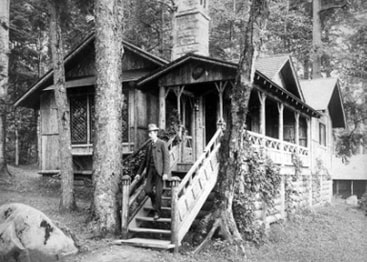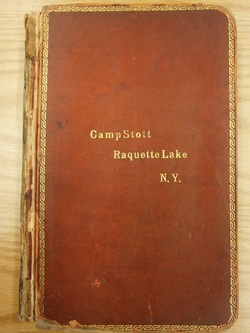 William West Durant leaving his cabin at Pine Knot circa 1880.
William West Durant leaving his cabin at Pine Knot circa 1880. At first I thought I would write a book about his philandering antics with his supposed mistress Minnie Kirby while he was completing his compound great camp Pine Knot (now named Camp Huntington and owned by Cortland College as an education facility on Raquette Lake, NY). But after conducting research about William and his family I realized I had an epic saga on my hands. A story of greed and naivete, bred from privilege and corruption. A family history that involves love, indiscretion, and betrayal. It's also the story of a visionary who altered the face of rural architecture across America and continues to influence us today.
William was educated in England and Europe while his father was busy building the Transcontinental Line through the United States. In his youth he and his sister Ella socialized with aristocracy and royalty, blissfully unaware of the major societal changes going on in the U.S. after the Civil War.
A complicated man, William had little knowledge of his father's business when he was summoned to return to the U.S. while on a hunting trip in Egypt. It was 1874 and Dr. Durant, on the brink of bankruptcy needed William to help him build an empire in the Adirondack wilderness that would attract the elite from major U.S. eastern cities. As the story unfolds the reader will learn what happens to this grand idea and also how William, with little training but great ambition, starts a tradition of building with local material and craftsmanship that permeates modern-day construction techniques for second and rustic home-building throughout the United States.
William played a major part in opening up the Adirondacks through the railways, and steamship business in partnership with his father Dr. Thomas C. Durant. Yet after his father's death William became embroiled in the unraveling of the railroad business and family battles that ultimately ended in penury.
This is the story of my following a story and the people and places that motivate me to continue on the quest: my muses, friends, and family members that have put up with my fascination with this intriguing clan and my ambition to bring its members to life in fictional form.

 RSS Feed
RSS Feed
